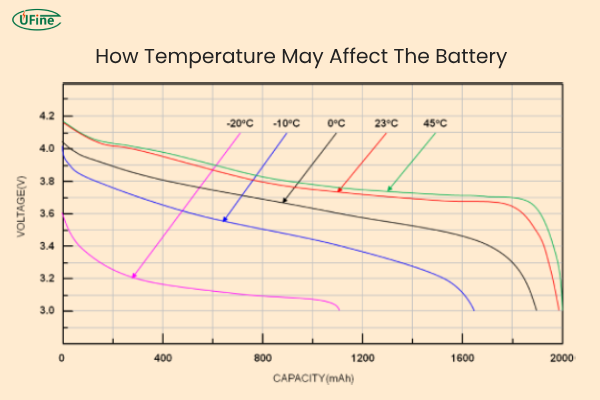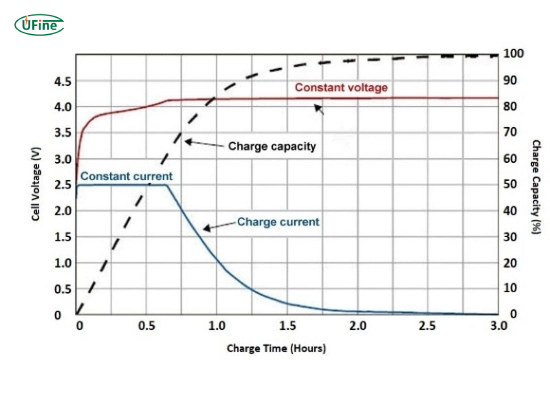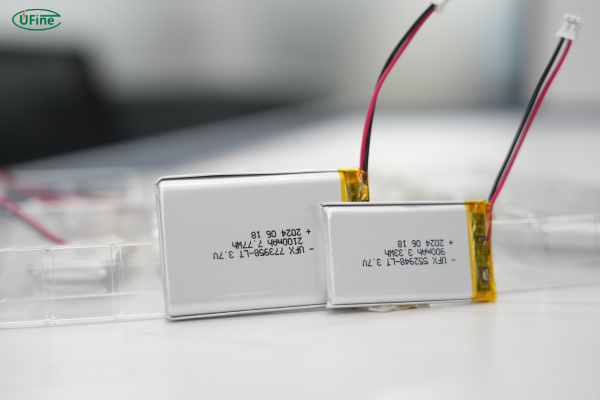When you press the power button on your phone or when a drone takes off into the sky, there’s one invisible force making it all possible—voltage. More specifically, lithium cell voltage.
Most people only think about battery percentage. But behind that percentage lies a delicate and powerful balance of voltage. It tells us how charged a battery is, how much power it can deliver, and whether it’s safe to use.
Without stable voltage, batteries fail. Devices shut down. Sometimes, they even explode. That’s why understanding lithium cell voltage is more than just technical knowledge—it’s about safety, efficiency, and trust. And in a world that runs on lithium, this knowledge is now essential.
Part 1. What Is the lithium cell voltage?
Lithium cell voltage is the electrical pressure between a single battery cell’s positive and negative terminals. In simple terms, it’s the force that pushes electrons through a circuit, powering everything from electric vehicles to your smartwatch.
But this voltage isn’t static. It changes depending on the state of charge, battery chemistry, age, temperature, and usage conditions. That’s why one lithium battery may read 4.2V when fully charged and drop to 3.0V or less when nearly empty.
To imagine this, think of a river. The voltage is like the pressure of water flowing downstream. High voltage? The river rushes fast. Low voltage? It trickles. No voltage? Still water. No power.
Part 2. Nominal, maximum, and minimum voltage: what’s the difference?
One of the most common misunderstandings is confusing nominal voltage with maximum or minimum values. Let’s make it clear.
- Nominal Voltage: This is the “average” voltage a lithium cell runs at during regular use. For many Li-ion cells, it’s around 3.6V to 3.7V.
- Maximum Voltage: This is the peak a cell can reach safely—usually 4.2V for Li-ion and LiPo. Charging beyond this point increases the risk of fire or explosion.
- Minimum Voltage: The lowest safe level before damage begins. For most lithium chemistries, that’s 2.5V to 3.0V. Going below this is known as over-discharge—a silent killer of batteries.
These numbers are not just suggestions. They are hard boundaries. Respecting them means longer battery life. Ignoring them can lead to serious degradation—or worse.
Part 3. Different lithium chemistries, different voltages
Not all lithium batteries are created equal. There are several types of lithium-based chemistries, each with its unique voltage profile and application.
| Chemistry | Nominal Voltage | Max Voltage | Min Voltage | Characteristics |
|---|---|---|---|---|
| Li-ion (NMC) | 3.6V | 4.2V | 2.5V | High energy, common in phones & laptops |
| LiPo | 3.7V | 4.2V | 3.0V | Lightweight, high discharge, used in RC & drones |
| LiFePO4 | 3.2V | 3.65V | 2.0V | Long life, stable, used in solar & EVs |
| LiMn2O4 | 3.7V | 4.2V | 3.0V | Good thermal stability |
Each chemistry brings trade-offs. For instance, LiFePO4 has lower voltage, but it’s more stable and lasts longer. On the other hand, LiPo gives quick power bursts, ideal for racing drones or RC cars, but needs careful voltage management.
So, when choosing a battery, knowing its voltage profile isn’t just useful—it’s vital.
Part 4. Voltage and state of charge (SOC)
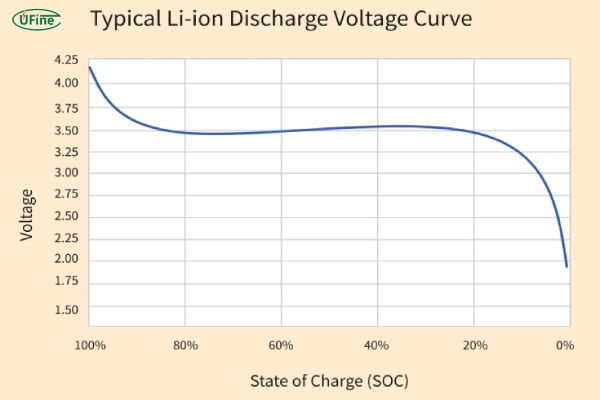
Many people believe that voltage directly reflects how “full” the battery is. But the truth is a bit more complex.
Yes, there is a general relationship between voltage and SOC (State of Charge). Higher voltage usually means a fuller battery. But this relationship isn’t linear. In fact, lithium batteries tend to hold voltage steady for much of their discharge, then drop sharply at the end.
This means:
- A 3.7V reading might suggest 50% charge… or 30%, depending on the chemistry.
- A battery could look fine, then suddenly die—especially if it’s aged or unbalanced.
That’s why high-end devices and electric vehicles use Battery Management Systems (BMS) to read not just voltage but also current, temperature, and battery history to estimate SOC accurately.
Part 5. Why voltage directly impacts performance
Voltage isn’t just about how much energy is left. It also determines how much power the battery can deliver in the moment.
Low voltage = low power output. Your motor may slow down. Your screen may dim. Your drone may lose lift.
High voltage = strong performance, but also more stress on the battery if you push it to its max.
Many high-drain devices will shut off automatically when voltage drops below a safe level. It’s a built-in defense against battery damage. But if you push beyond those limits—like using cheap chargers or ignoring cut-off warnings—you’re damaging the cell every time.
Part 6. How voltage affects battery lifespan
Now here’s something that hits close to home: your battery doesn’t die all at once. It dies slowly—volt by volt.
Every time you charge to 4.2V, you’re giving it full power. But you’re also increasing stress. That stress causes small cracks inside the cell and builds up heat. Over hundreds of cycles, the damage becomes irreversible.
And every time you discharge below 3.0V? You risk over-discharge, which breaks down the electrolyte and weakens internal structure.
To protect your battery:
- Avoid charging to 100% every time. 80–90% is healthier.
- Never let it drop below 3.2V if you can avoid it.
- Use smart chargers with voltage limits.
These small habits can double or even triple battery life.
Part 7. Voltage in series and parallel configurations
When lithium cells are used in real-world battery packs, they’re rarely alone. They’re connected in series or parallel, or both.
- In series, voltages add up. For example, three 3.7V cells in series = 11.1V (3S). That’s common in RC cars or drones.
- In parallel, capacity adds up but voltage stays the same.
Series packs are powerful—but risky. If one cell is weaker or lower in voltage, it drags the others down. That’s why voltage balancing is critical in packs. One bad cell can ruin the whole battery.
Batteries In Series Vs Parallel:Which Is Better?
Part 8. How to measure lithium cell voltage
Now let’s get practical. How can you measure voltage yourself?
1. Digital Multimeter
- Set to DC voltage mode.
- Place red probe on the positive terminal, black on the negative.
- Read the value—it should match expected cell voltage.
2. Battery Voltage Checker (for RC/LiPo)
- Plug it into the balance lead.
- It shows individual cell voltages and total pack voltage.
- Great for spotting imbalances.
3. Smart Charger or BMS App
- Some chargers and apps display per-cell voltage.
- Use them during charge/discharge to monitor health.
Why it matters:
Checking voltage isn’t just for technicians. It’s how you catch problems early, like a weak cell or damaged pack. Even a 0.1V imbalance between cells can signal trouble. And if you let a pack sit discharged? Always check before charging. Recharging a cell that’s below 2.5V can cause fire or permanent damage.
Part 9. Final words
Voltage isn’t just a number. It’s your battery talking to you—telling you when it’s tired, stressed, full, or in danger.
If you listen, you can extend its life. You can avoid sudden failures. You can save money, time, and maybe even your device.
So next time you plug in a charger or push your RC car to its limit, remember: every volt matters.
And if you’re ever unsure about voltage requirements or want to build custom lithium battery packs for your project, Ufine Battery is here to help. From single cells to complex packs, we deliver quality you can trust—with voltage that performs exactly how you need it.
Related Tags:
More Articles
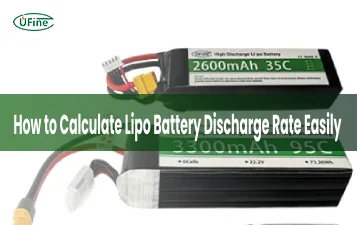
LiPo Battery Discharge Rate Guide & Calculation Tips
Understand LiPo battery discharge rates, C-ratings, and how to calculate max current. Essential guide for RC, drones, and electronics users.
High‑Capacity 3S LiPo Batteries: 5000 mAh vs. 10000 mAh
Compare 3S LiPo 5000mAh vs 10000mAh batteries by weight, power, and use. Find the best fit for your drone, RC car, or boat setup.
Top 5 Applications for Small 3S LiPo Batteries
Small 3S LiPo batteries power drones, RC gear, wearables, and robotics with high energy and low weight. Making them ideal for compact electronics projects.
Building and Charging Your Own 3S LiPo Pack: A Step‑by‑Step Guide
Learn how to build, balance, and charge a 3S LiPo battery pack safely at home with this complete DIY guide for hobbyists and beginners.
How to Choose the Right LiPo Battery Plug Type?
Discover the best LiPo battery plug types, how to choose them, and expert tips for safe usage, soldering, and maintenance.
